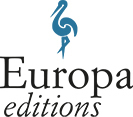Helena Janeczek
The Girl with the Leica
The book
WINNER The Strega Prize
Gerda Taro was a German-Jewish war photographer, anti-fascist activist, artist and innovator who, together with her partner, the Hungarian Endre Friedmann, was one half of the alias Robert Capa, widely considered to be the twentieth century’s greatest war and political photographer. She was killed while documenting the Spanish Civil War and tragically became the first female photojournalist to be killed on a battlefield.
August 1, 1937, Paris. Taro’s twenty-seventh birthday, and her funeral. Friedmann, who would henceforth assume the moniker Robert Capa alone, leads the procession. He taught Taro to use a Leica. Together, they left for the Spanish Civil War to bear witness to fascist war crimes. He is devastated, but there are others, equally bereft, in the procession: Ruth Cerf, Taro’s old friend from Leipzig with whom she fled to Paris; Willy Chardack, ex-lover; Georg Kuritzkes, another lover and a key figure in the International Brigades. They have all known a different Gerda, and one who is at times radically at odds with the heroic anti-fascist figure who is being mourned by the multitudes.
Gerda Taro is at the heart of this kaleidoscopic novel but another of its main characters is the era itself, the 1930s, with economic depression, the rise of Nazism, hostility towards refugees in France, the century’s ideological warfare, the cultural ferment, and the ascendency of photography as the age’s quintessential art form.
The Girl with the Leica is a must-read for fans of historical fiction centered on extraordinary women’s lives.
The author
Helena Janeczek
Born in Munich in a Polish Jewish family, Helena Janeczek has been living in Italy for over thirty years. With The Girl with the Leica she won the Strega Prize, Italy’s most prestigious literary award, and was a finalist for the Campiello Prize. She lives in Milan, Italy.
Press
- Apr 22 2020
“...a modern feminist hero’s story.”
— Daily Art Magazine - Apr 22 2020
“...a complex portrait of Taro and her friends.”
— Lilith Magazine - Nov 23 2019
“Daring.”
— The Guardian - Oct 4 2019
“Janeczek creatively and seamlessly spotlights war photographer Gerda Pohorylle...”
— Publishers Weekly - Oct 2 2019
12 Books You Should Read This October
— Literary Hub - Sep 30 2019
Ten books to read in October
— BBC Culture



